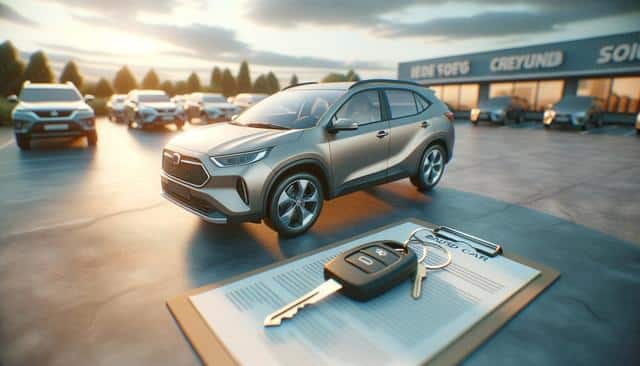Research and Narrow Down Your Choices
Before diving into the world of used cars for sale near me, it’s crucial to do some research. Start by determining what type of vehicle suits your lifestyle and budget. Consider factors such as fuel efficiency, maintenance costs, and overall reliability. Compiling a list of potential models will help streamline your search as you begin to explore buying second hand cars.
Next, use online resources to compare different models. Look for user reviews and expert opinions to understand the pros and cons of each vehicle. It’s essential to keep your needs at the forefront, ensuring that the car you choose aligns with your daily activities and long-term plans.
Once you have a shortlist, delve into specifics:
- Look for common issues associated with the models you’re interested in.
- Check for recalls or service bulletins that may affect the decision.
- Review the performance history and resale values to ensure a sound investment.
Inspect the Vehicle Thoroughly
When you’re ready to view a car in person, a detailed inspection is vital. Examine both the exterior and interior carefully, keeping an eye out for signs of damage or wear that might not be immediately evident. Pay close attention to:
- Rust or corrosion on the body and undercarriage.
- Condition of the tires and brakes.
- Functionality of lights and other electrical components.
- Interior features such as seats, dashboard, and air conditioning.
Don’t hesitate to ask for the vehicle’s maintenance records. A well-documented service history can offer peace of mind and highlight the car’s condition over time.
If possible, bring a trusted mechanic with you or hire one for a thorough evaluation. An expert can spot issues that might escape the untrained eye, ensuring you’re getting a quality vehicle.
Take a Test Drive
A test drive is an indispensable part of the used car buying process. It’s your opportunity to experience the vehicle firsthand and gauge its performance. During the test drive, pay attention to the following aspects:
- Engine performance and smoothness of the ride.
- Transmission shifts and overall handling.
- Braking efficiency and steering response.
- Noise levels inside the cabin.
Take the car on different road types, including highways, city streets, and parking lots. This variation will help you assess how the vehicle handles in various conditions.
Don’t rush the process. Use the test drive to confirm that the car meets your expectations and feels comfortable to drive.
Negotiate the Price
Once you’ve found a car that ticks all the boxes, it’s time to negotiate the price. Armed with the knowledge of market values and potential issues from your research and inspection, you’re in a strong position to discuss a fair price. Here are some tips to consider:
- Start with a lower offer, giving yourself room to negotiate.
- Use any identified issues as leverage to lower the price.
- Be prepared to walk away if the seller isn’t willing to meet your terms.
- Consider additional costs such as taxes, registration, and any immediate repairs or upgrades.
Being respectful and patient can go a long way in reaching a satisfactory agreement.
Finalize the Purchase
After successfully negotiating the price, the final step is to complete the paperwork. Ensure all necessary documents are in order, including the title, bill of sale, and any warranty agreements. Verify that the vehicle identification number (VIN) on the paperwork matches the one on the car.
Before making the payment, double-check any loan agreements or financing terms if applicable. Make sure you understand all aspects of the contract, and don’t hesitate to ask questions if something is unclear.
Following these steps will ensure a smooth and informed purchase, allowing you to drive away with confidence in your new-to-you vehicle.
